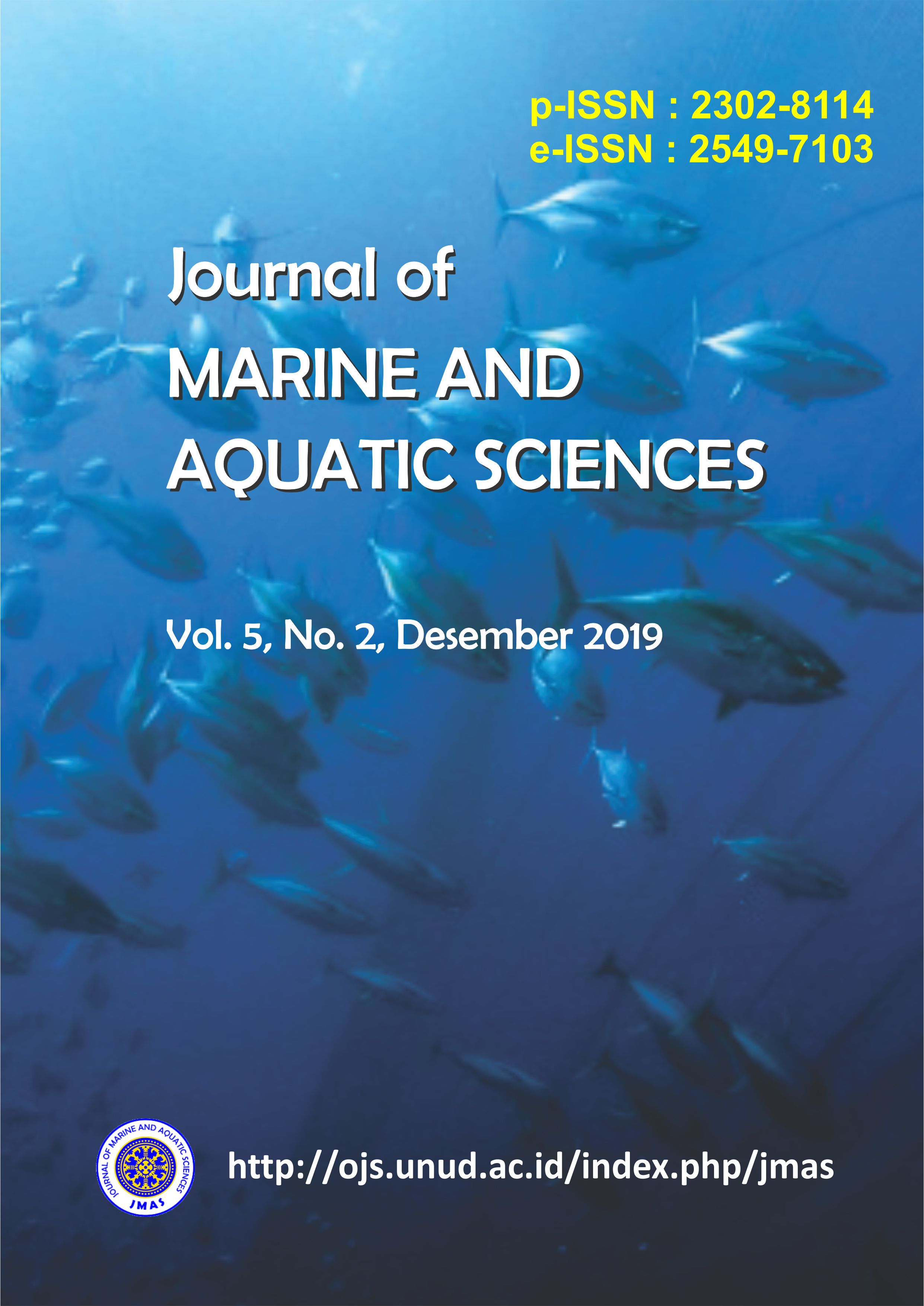Perbandingan Kemampuan Satelit SAR, Optik dan Kombinasi SAR & Optik Untuk Mendeteksi Area Mangrove di Teluk Benoa
Abstract
Mangrove in Benoa Bay plays important roles in the southern Bali island. Mangrove habitat in Benoa Bay has undergone in area changes due to various anthropogenic activities and natural factors, it is important to monitor the distribution of the mangrove forests. Mangrove area changes can be detected using remote sensing technology. This research is to aims the capabilities of radar and optical satellites in mangroves detection using supervised classification Maximum likelihood & Minimum distance. The results showed that radar images failed to detect mangroves as a separate class and produced three classes of land cover (urban, vegetation and waters), optical images and a combination of radar & optic images capable of detecting mangroves as a separate class and produce five land cover class (vegetation other, urban, mangroves, waters and agriculture). The evaluation of the Maximum likelihood classification shows that the combination of radar & optical images scenario has the highest overall accuracy and kappa accuracy with value of 91.35% and 87.01% respectively. Minimum distance classification shows that the optical image scenario has the highest accuracy and highest kappa accuracy with value of 80.83% and 72.51%. The results of the accuracy evaluation shown that the maximum likelihood has higher accuracy than the minimum distance classification method.
Downloads

This work is licensed under a Creative Commons Attribution 3.0 International License.
Copyright 2012 - 2023 Journal of Marine and Aquatic Sciences (JMAS)
Published by Fakultas Kelautan dan Perikanan Universitas Udayana, Denpasar, Bali, Indonesia
JMAS (p-ISSN 2302-8114; e-ISSN 2549-7103)


